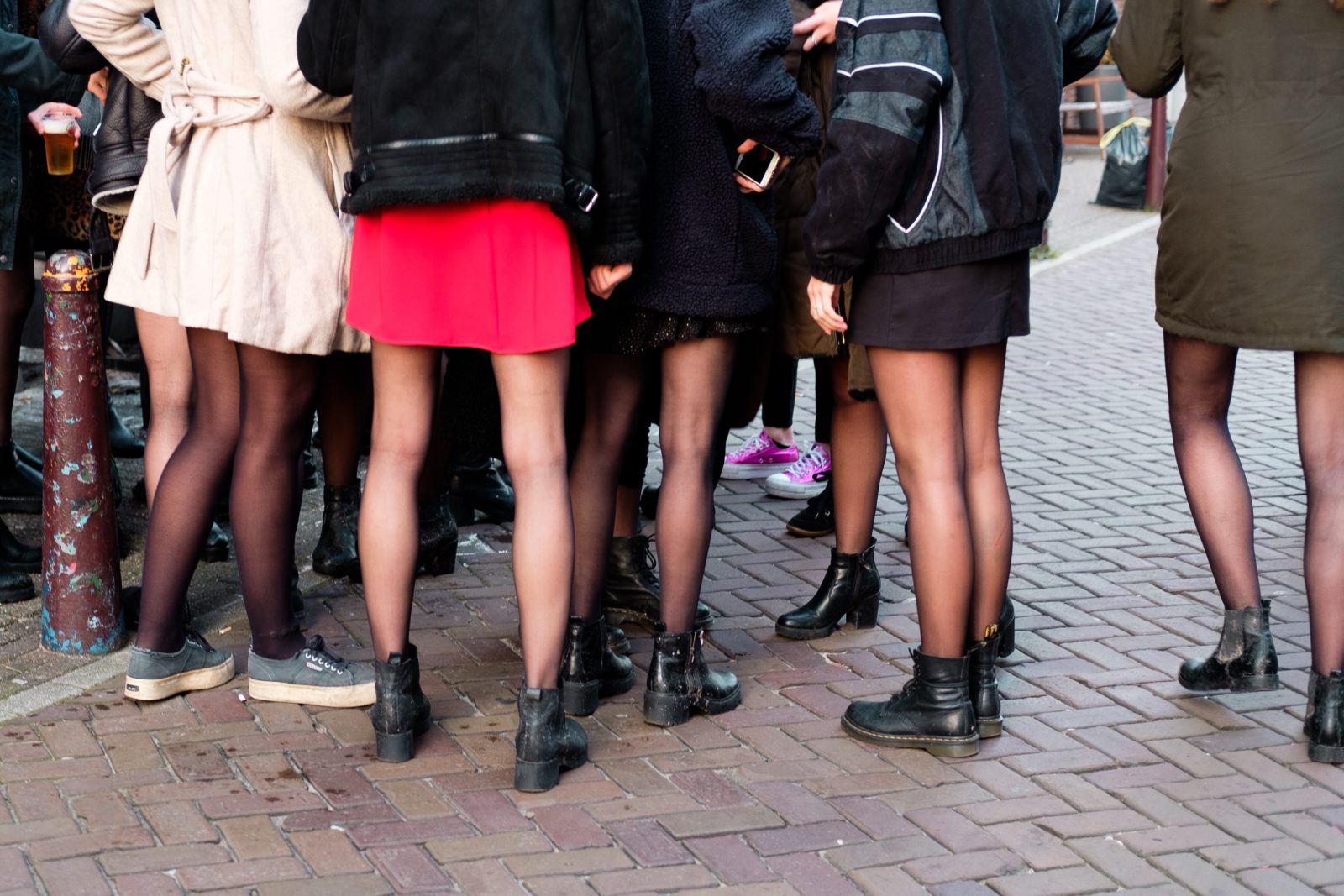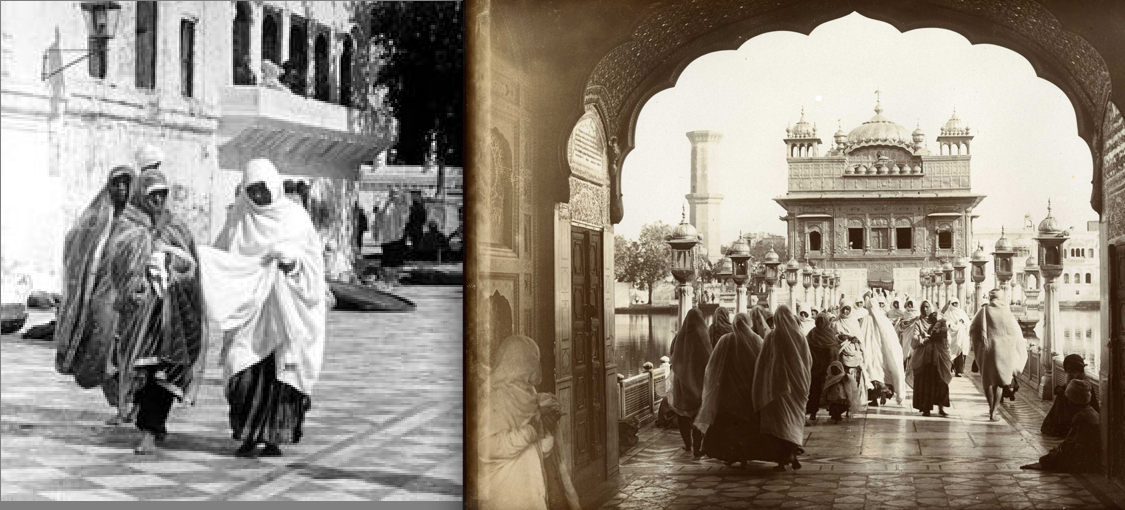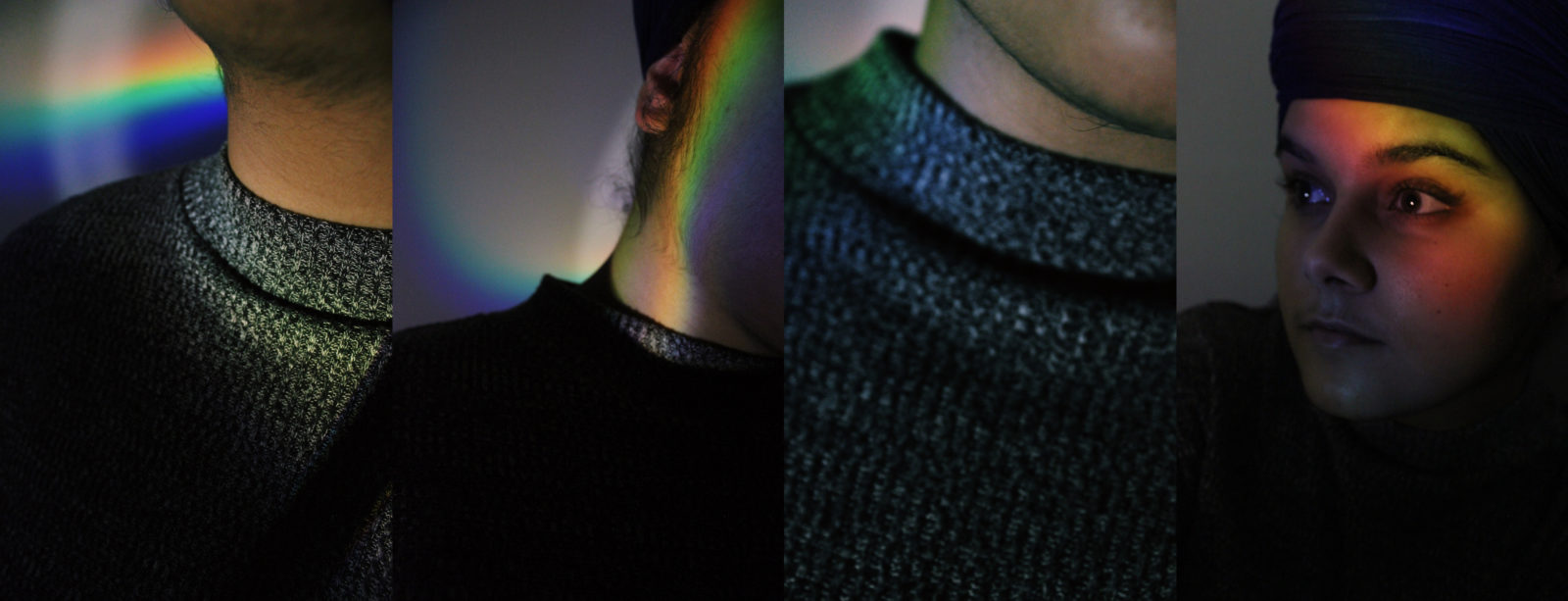By Lakhpreet Kaur
Does a long, shapeless dress make you “more of a Sikh”? Does a plunging neckline make you “less of a Sikh”? What about a short skirt? Tank top? Bikini? This is a topic of many Sikh camp girls’ cabin discussions. Parents and daughters argue about what she is allowed to wear to school, the beach, or prom. Inevitably, Sikhi is brought in as a justification for some point.
The idea of “modesty” appears in gurbani interpretations and some people use that word to suggest a standard of dress.
Modesty
Definition 1: A modest person does not draw attention to their … desirable attributes. It can include humility, shyness, or simplicity.
Definition 2: Modest is used to describe a mode of dress that is intended not to encourage the opposite sex.
These words, “humility,” or “modest” have different meanings for each person. In fact, across time, generation, context, place, and society, the standards vary as to what parts of the body that are considered “ok” to reveal.
Modesty Across Cultures
It is pretty apparent that the rules of dress vary across cultures. In the US I can wear shorts and a t-shirt but if I go to some Middle-Eastern countries, I would have to abide by their conservative rules of dress.
On the extreme end of the clothing spectrum are the Himba women of northern Namibia (1). Traditionally, they are topless and barely wear any clothing.
“In a society in which women customarily go about in public bare-breasted, there is no shock value in a bare breast…” (2). It is not considered seductive, indecent, or immoral. Such a custom, however, cannot be transposed onto another time or place without a significantly different reaction by other people. So, in the Himba culture my exposed chest would be acceptable and appropriate but in a Punjabi Gurdwara, even a little bit of cleavage can be deemed inappropriate.
Consider this conversation I have had.
- Uncle: “Sikh girls should not expose their legs! Put on some pants!”
- Kaur: “Why not? They’re long Bermuda shorts.”
- Uncle: “I don’t care. It’s immodest. Sikhs should be humble.”
I understand where this uncle is coming from. In Punjab, exposing the legs via Bermuda shorts might be considered immodest. However, this is not the case in the United States. This argument would be like telling a US Kaur, “Completely cover your face when you go out! Why? Because way over there, in Afghanistan, it is immodest if you don’t”. or telling the Himba woman she must wear a shirt while at home in Namibia because she’s considered immodest by American standards.
Modesty is not transnational, Uncle Ji. Nothing about modesty is a universal truth. Furthermore, pointing to Punjabi culture to justify a behavior is not very sound logic either. One wouldn’t point to the Punjabi practice of heavy drinking and domestic abuse to justify the same actions in the United States (at least, I hope no one does) (2b, 2c).
The uncle’s all-too common argument is superficial and transient. I need a deeper reasoning other than the uncle-reasoning of “tradition” or “just cuz,” …and for me the measure of modesty is intent, context, and perception.
I did change into pants, because of context and perception: it was out of respect for the uncle and also because I was surrounded by Punjabis who believed shorts to be indecent.
Modesty Across Time
During the 1800s in the United States, it was indecent for a woman to expose her bare ankle. (In some cases, the legs of furniture was even covered up for modest purposes) (2). In 1910, women were arrested for showing their legs and shoulders at the beach. The progression of what is deemed an appropriate bathing suit in the US over time is interesting and shows how the definition of “modest” changes.
I look at Sikh Punjabi women. This photo is of Sikh women at Harmindar Sahib in 1907 (3). Compare this with the fashion trends one currently sees at Harmindar Sahib.
I think this illustrates how the idea of modesty has changed within Punjabi-Sikh culture. Not only are the 1900s women completely covered and there is not even a suggestion of the female figure, but they are also not smiling (4). Smiling can sometimes be considered immodest (5).
In Theory
I think that to say there is a strict Sikh religious answer to what exactly constitutes modesty, in my opinion, is a bit misleading because that would conflate culture with spirituality/religion. For example, if I say a Punjabi Salvar Kameez is modest and thus should be the Sikh standard…what happens if I go to Saudi Arabia where such an outfit would be considered too sexy/tantalizing or immodest? That would mean, as a Sikh I am not dressing modestly and would be anti-rehat (or anti-Sikh spirit). Thus, I don’t think the term “modest” has a fixed definition. Religion does not change, but culture and social perceptions do, and therefor so does the definition of modest.
I once heard someone say. “If Guru Gobind Singh Ji stood in front of you right now, would you feel like you were dressed appropriately? That question should guide the way you dress.” Though thought-provoking, I disagree. I would dress for Guru Gobind Singh Ji to show my utmost respect. I would follow the cultural standard that I grew up with of what constitutes respect which, would probably be a salvar kameez or a business suit. But I’m not going to wear that all the time.
However, unlike Guru Gobind Singh Ji, Vaheguru is not human bound, nor is Vaheguru steeped in culture, preoccupied with definitions, or following social standards as I do or as the Gurus might have. So, for the moment, I remove the social constructs and ask the question, if I was somehow “brought before Vaheguru” (for this argument, just go with it) would I show cleavage? Would I wear shorts? What would I wear?
Well, Vaheguru created me, so I would feel comfortable being naked in front of Vaheguru.
Why would I want to shield Vaheguru from zer* own creation? I’m pretty sure Vaheguru knows what’s underneath my clothing. Furthermore, Vaheguru is not judgmental but is kind and loving. Nor is Vaheguru seduced and taken by lust. So I don’t have to worry about whether or not Vaheguru will think I am a slut or if ze* will think that I am a restricted prude. I have divine light within me. But, I don’t think I could use this “Vaheguru Clothing Standard” of nakedness in guiding my everyday dress choices. (FYI: I know Vaheguru is everywhere and there is no way I can actually be in front of Vaheguru.)
*ze = gender neutral pronoun
In Practice
I think Sikhi gives me a framework to help me define “modesty,” but I also think it gives flexibility to allow the culture of a time and place to help guide me in my choice of clothing. If the thought, “Am I dressing according to Sikh ideals?” comes up for you, here are a few questions that I ask myself.
- “What is my intent in wearing this? Is that intent inline with Sikh values?” ie) I’m wearing this dress in public because it looks sexy. If “yes,” that is not inline with Sikhi because it would be invoking lust for one’s own sensual gain.
- “What is my purpose in wearing this outfit? How will I be perceived?”
Ultimately, each woman has her own personal boundaries that may or may not fluctuate with time or place. I do not think any particular way of dressing is inherently better or worse than another way. However, I think each mode of dress has an objective.
Final Words
The Gurus never said,
“Show no leg. Show no cleavage. Rahao.”
Rather they said, “Be modest.” I don’t think there is one answer to, “How should a Sikh dress?” but the answer is suggested by one’s surroundings, sangat, and cultural expectations. It’s all relative. Nothing about modesty is a universal truth. I believe Sikhi is universal but the definition of modesty is not.
Sources:
(1)http://www.african-tribes.org/
(2) https://www.law.upenn.edu/cf/faculty/aallen/workingpapers/b51VillanovaLR841(2006).pdf
(2c)http://www.cida-page.org/Docs/domestic_violence.pdf
(3) http://goldentemple1588.com/celebrating-sikh-women/
(4) http://www.sikhiwiki.org/index.php/
(5) http://www.uri.edu/…/01%20Richard%20L.%20Wiseman%20&;






5 Comments
Surjit
07/18/2014 at 1:12 pmYou said, “The Gurus never said, “Show no leg. Show no cleavage. Rahao.”
Did Gurus ever said, “Show legs, Show cleavage. Rahao”
Please do not add or twist any vocabulary from Guru Granth Sahib to state your view point. Not all can agree with you, but use of Gurbani in a twisting way to state your point of view is questionable.
Just a humble submission!
Amanpreet
11/16/2014 at 1:45 ami also agree..one should not use gurbani words anywhere in any context…rahao word used by you is disrespectful..request you to edit and remove this word from your sentence..
Deep Singh
12/06/2014 at 4:50 amlikes for every word written and thought expressed.
Aman
12/07/2014 at 7:12 amGood I sight but seems like you’re scraping the top of Sikhi to make arguments against tradition without and mention of the bani, in all honestly, valiant but ignorant and somewhat childish if the basic teachings. Rather than focus on maya, focus and write about your soul…
A.Kaur
04/21/2015 at 9:13 pmI think her article is perfectly fine- except for one thing…she never brought up the double standards with the men and prancing around gurdwara without pants! Okay she said guru Ji never said show no leg.. But nor did he say you can right Surjit? Yet why is it that the MEN can walk around gurdwaras without pants?? PLease explain. No where is it written in our bani men have more rights then women, In fact quite the opposite. We are the bearer of kings so why don’t you all show us some respect and cover up!! Sick of doing paath and then looking up to hairy legs walking past. I’m not very happy to see their hairy legs either thank you very much. We are not going to battle, and there is no war where they’ll be running etc, no excuse not to cover up. And I find it absolutely unacceptable when they stand on top where SGGS is to chor pher with fans going, what are you all trying to prove?? Future wouldn’t want you to flash us! Disgusting. How would you like me to come to gurdwara in a just slightly below knee dress and walk around? The looks I get for wearing long Kurta tops and jeans alone decently covered, can’t imagine how many people I’d have to revive if I wore what you men wear to gurdwara. Double standards!! and I’m not impressed. Get your acts together and put some pants/pajamas on for the sake of your own dignity. And our eyes. [This article has ben edited as it did not comply with the Kaur Life comment policy.]